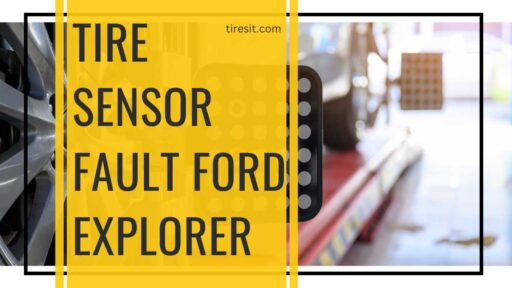Enhance your Toyota Tacoma Tire Pressure handling and fuel efficiency by monitoring and adjusting the tire pressure. Our website offers expert advice and resources on maintaining the ideal tire pressure for your vehicle.
The Importance of Maintaining the Right Toyota Tacoma Tire Pressure
Having a Toyota Tacoma Tire Pressure this has taught me the importance of maintaining the correct tire pressure for optimum performance. Apart from affecting a vehicle’s comfort and handling, tire pressure also determines its fuel efficiency and overall safety. For instance, tire pressure that is too low or too high is likely to compromise the performance and lifespan of your Tacoma.
Understanding Recommended Tire Pressure for Toyota Tacoma
To make sure that you are keeping up with appropriate tire pressure in the case of your Toyota Tacoma, it is necessary to understand what the recommended tire pressure is according to the manufacturer’s instructions. The owner’s manual or sticker on the driver-side door jamb will give you an idea about the ideal tire pressure for your Tacoma. However, keep in mind that recommended tire pressures may differ depending on different loads and sizes of tires; hence, refer to specific guidelines for your model.
Effects of Overinflated Tires on the Performance of Toyota Tacoma
Your Toyota Tacoma may not perform well if it has overinflated tires. Harsh ride and less comfortable road behavior can be caused by reduced tire-road contact area due to increased air pressure in them. Moreover, over-inflated tyres increases vulnerability to blowouts while reducing vehicles’ road traction; especially during rainy periods or slippery surfaces. Lastly, these tyres tend to wear out faster and unevenly thus having short lifespan requiring frequent replacements.
Effects of Underinflated Tires on the Performance of Toyota Tacoma
Similarly, underinflated tires can equally bring a lot more problems to your Toyota Tacoma than anticipated. When the tire pressure goes down too low, this causes excessive flexing on their sidewalls, resulting in increased rolling resistance as well as diminished fuel economy in return. Handling and braking abilities are hampered when tires lack proper inflation, making it harder to steer our vehicle through its path. Further, a low-pressure situation will lead to irregular wearing off, which in turn compromises durability and increases the chances of tire bursting.

How to Check and Adjust Tire Pressure in Toyota Tacoma
Here is a step-by-step guide on how to check and adjust tire pressure in your Toyota Tacoma:
What you’ll need
Tyre pressure gauge: It’s important to have a reliable pressure gauge (digital or stick) for accurate readings. Air compressor: In case your tires happen to be under-inflated, you will need an air compressor to inflate them. You can find them at most gas stations or buy one for use at home.
Owner’s manual: Check the recommended tyre pressure as per manufacturer instructions of your Tacoma making reference to the specific model and tire size as indicted in its manual. Optionally, see if this information is available on a sticker inside the driver’s door jamb or on the gas tank door.
Steps
- Obtain recommended tire pressures: First off, determine the PSI (pounds per square inch) that are prescribed for riding with your Tacoma’s tires. Once again, this information can be obtained from either owner’s manual, sticker inside the driver’s door jamb or even on the gas tank door. However, there are different ratings specified for driving with light load (just you) or heavy load (passengers and cargo).
- Make sure your tires are cold, i.e., they have not been driven for at least three hours or have not gone more than a mile at low speed. Driving them brings about heat that somewhat increases the pressure. On warm tires, the reading of tire pressure could be misleading.
- Unscrew the valve cap from one of your tires, i.e., unscrew its valve cap (the small cap on the stem of each tire).
- Press the nozzle of the tire pressure gauge firmly onto the valve stem, making sure that a hissing sound, which means some air escapes momentarily, is heard.
- The gauge will display current PSI values that show up as per existing car-tire pressures. Compare this to what you found in Step 1.
- Check all four tires including spare: The recommended tire pressures may vary depending on models / makes of cars if there is any.
- Inflate it to the appropriate PSI using an air compressor in case a tire reads under-inflated. Add and check frequently so as not to overinflate. If it is over-inflated, use either a depression button on a gauge (if available) or use a valve stem tool to release gradually until you attain recommended filling standards again…
- Once you have attained optimal pressure, screw back the valve cap onto your valve stem to keep out dirt and debris after deflating all other tires.
Optimal Tire Pressure For Toyota Tacoma
Below are some tips for achieving and maintaining proper inflation levels for your Toyota Tacoma:
Knowing the Right Numbers
Referencing Your Manual: Firstly, look into your specific Toyota Tacoma model’s ideal tire pressure as well as tire size from owner’s manual, door jamb sticker or gas tank door sticker.
Load Factor: These two sets figures are typically outlined in user manuals depending on whether just you’re driving with light loads compared to driving with heavy loads including passengers and cargo.
Checking and Adjusting Pressure Regularly
Frequency: Manufacturers advise doing this once monthly or before long trips as well as heavy loads.
Cold Tires: Always check tire pressure when the tires are cold, i.e., they have not been in use for three hours or have not traveled over a mile at low speeds. Driving them brings about heat that somewhat increases the pressure. On warm tires, the reading of tire pressure could be misleading.
Use a Reliable Gauge: Buy a good quality gauge for reading tire pressures. They are easy to read digital gauges but simple stick gauges will also work.
Spare Tire: Do not forget to include it in your monthly pressure checks
Maintaining Optimal Pressure
Inflate to the Recommended PSI: To do this, you may need an air compressor and tire pressure gauge, which can be bought at petrol stations and shops for home use only.
Overinflation is Just as Bad: However, exceeding recommended quantities of air is also bad for your car’s health, although underinflation is more common than anything else. Stick with recommended tire inflations so that you enjoy optimum performance and safety while driving.
Changes in Temperature: Tire pressure fluctuates slightly with temperature. It is normal for it to drop a bit during cold weather. However, sudden changes or a significant decrease in pressure might mean that you have a leak and need to inspect further.
More Tips
Visual Check: Not only does one require a tire pressure gauge, but also visual check on your tires occasionally can be beneficial. Look out for signs like uneven wear, bulges or cracks that may signify damage to the tire.
Rotation of Tires: Regular rotation of your tires, as specified in the manual, is necessary for even wearing. If properly inflated, the life of these tires will be prolonged through even wear.
TPMS (Tire Pressure Monitoring System): TPMS usually fits most Toyota Tacomas and notifies when your pressure level falls below a certain point, which could be a timely reminder to check or adjust your pressure. Don’t stop at this; make sure you conduct regular physical checks.
By following these tips and incorporating them into your everyday life, you will always maintain optimum inflation in the tires of Toyota Tacoma, thus ensuring the safety, performance, and durability of its tires. Remember that several minutes of preventive maintenance can save both money and time in the future.
The advantages of maintaining the right tire pressures for the Toyota Tacoma
Maintaining correct tire pressures within our Toyota Tacoma trucks is vital for their safety, performance, and longevity. Here are some key benefits:
Safety
Better control: Properly inflated tires offer better road holding, especially during cornering and braking, hence minimizing the chances of skidding or losing control of your vehicle.
Shorter Stopping Distances: Properly inflated tire will bring vehicle to halt more rapidly when you press on brakes reducing chances of accident occurrence.
Increased Stability: The right tire pressure helps keep the weight balance expected within the Tacoma, resulting in stable drive, especially on bumpy roads or when winds are strong.
Performance
Fuel Economy: Under-inflated tires increase rolling resistance which makes the engine work harder to overcome this resistance and keep your Tacoma moving. Keeping tires properly inflated allows them to roll more freely, improving fuel efficiency.
Smooth Ride: Well-inflated tires absorb less of the road’s bumps and irregularities, giving you a smoother ride as a passenger in your car.
Less Tear and Wear: Tires that are underinflated wear unevenly, so they need to be replaced before their useful life is over. This means that they can last longer if pressure is maintained at all times.
Other Benefits
Reduced Environmental Impacts: Proper tire pressure leads to improved fuel economy, which in turn reduces CO2 emissions for environmental benefits.
Ease on Engine: An underinflated tire causes more rolling resistance on the engine, making it wear out faster.
By keeping the recommended tire pressure for Toyota Tacoma, you are investing in the safety, performance, lifespan and overall driving experience of your Tacoma. You should always check your tire pressures regularly but especially before undertaking long journeys or when carrying heavy loads. For optimum results refer to your Tacoma owner’s manual for model specific recommendations on what tire pressure setting depending on your truck model.
Toyota Tacoma owners should avoid some common mistakes if they want to maintain the right tire pressure. One of them is simply relying on visual inspection to determine tire pressure, which is highly inaccurate. Besides, proper tire pressure can only be determined by a tire pressure gauge, and using this method will help you get the correct measurements. Another mistake is neglecting regular checks for the tire pressure, which leads to under-inflated or over-inflated tires being driven for long periods. Frequent routine checks are very necessary in order to ensure maximum performance and safety. Lastly, there are wrong models of tires that then lead to suboptimal performance as well as potential damage in tires used for Toyota Tacomas due to their specifications of wrong tire pressures for these models. Always look at the manufacturer’s recommended guide for your vehicle’s appropriate tire pressure.
The right tire pressure recommendations depending on the situation while driving in a Toyota Tacoma
Depending on the conditions prevailing in your area, the suggested range of air inflation in the car may differ from other parts of the world where such cars are used as well. Where an individual normally drives his or her car every day, it is good that he or she adheres closely to what was advised by its maker about how much air should be put inside its tires when inflating them; hence, this will enable individuals not waste their time buying uncomfortable new tires but instead buy ones that suit their needs best so that they may not have any problem with them along highways.
Conversely, when one wants to drive off-road or carry heavy loads, it would be good if he/she increases his/her desired level of air slightly until such time that more weight has been created, thereby improving traction with the road surface and hence better control over vehicle front axle movements (and hence better balance). If you need further clarity regarding specific driving conditions, the owner’s manual and certified dealerships or even giving them a call would be fine.
Frequently Asked Questions
How often should I check the tire pressure in my Toyota Tacoma?
In order to maintain the right tire pressure, you should check the tires once every month or before any long distance journey. This will make sure that you are keeping your car in shape for optimum performance and safety.
Can I use the same tire pressure for all four tires of my Toyota Tacoma?
A: Although it might seem a good idea to inflate all the four tires with one air pressure, it is worth noting that the front and rear tires could have different recommended pressures. For each specific tire, check out the owner’s manual or look at sticker on driver’s side door jamb which clearly shows what level of air must be put inside all these four wheels.
What are the signs of underinflated or overinflated tires?
If your car has under inflated tires it will show by having reduced fuel consumption, poor handling as well as uneven wearing out. Over-inflated ones on other hand will cause discomfort while driving due to harsh road conditions, less traction as well as premature wear of tires near their middle line.
Conclusion of Toyota Tacoma Tire Pressure
Knowing how to get correct measurements for proper tire pressure on Toyota Tacoma Tire Pressure is very important if we want our cars to perform better and last longer. A smooth ride, improved fuel economy, and long lasting tire life can be ensured by understanding what is recommended while avoiding key mistakes as well as making regular adjustments after checking them periodically. Consult your owner’s manual or call for advice from accredited dealerships on certain tire pressures applicable to your region from time to time since keeping accurate levels always has positive implications for maximizing the performance and pleasure derived from owning a Toyota Tacoma.





